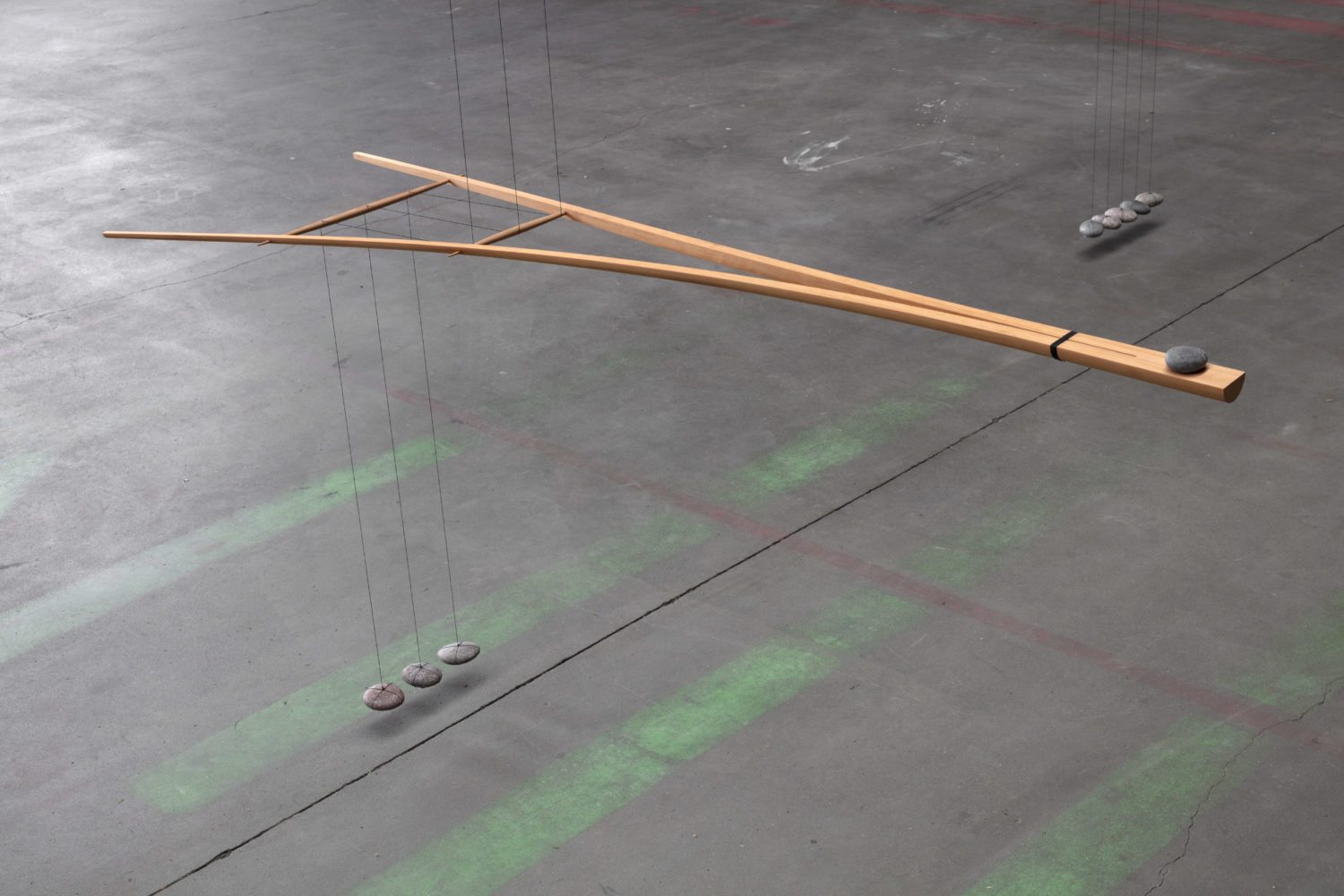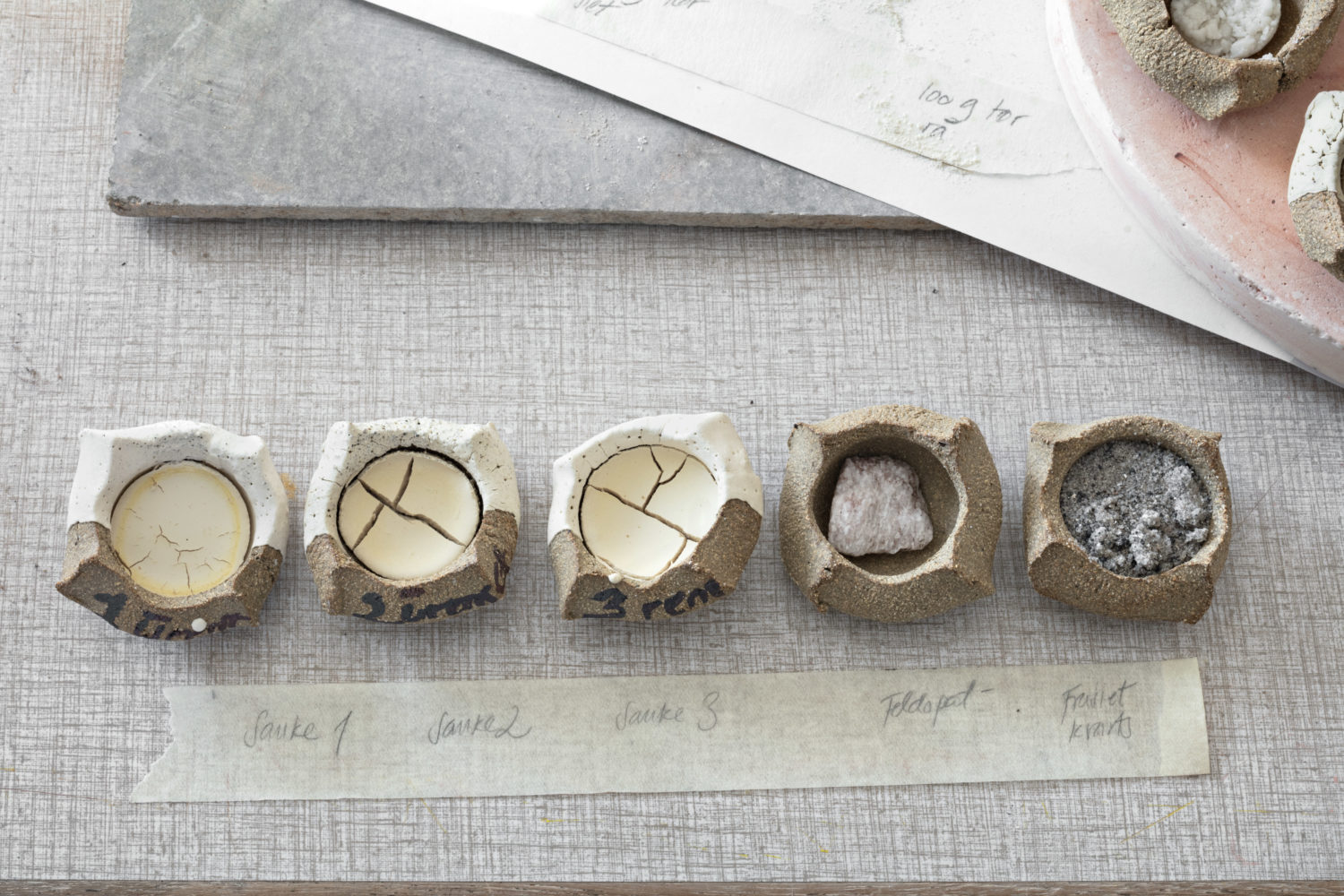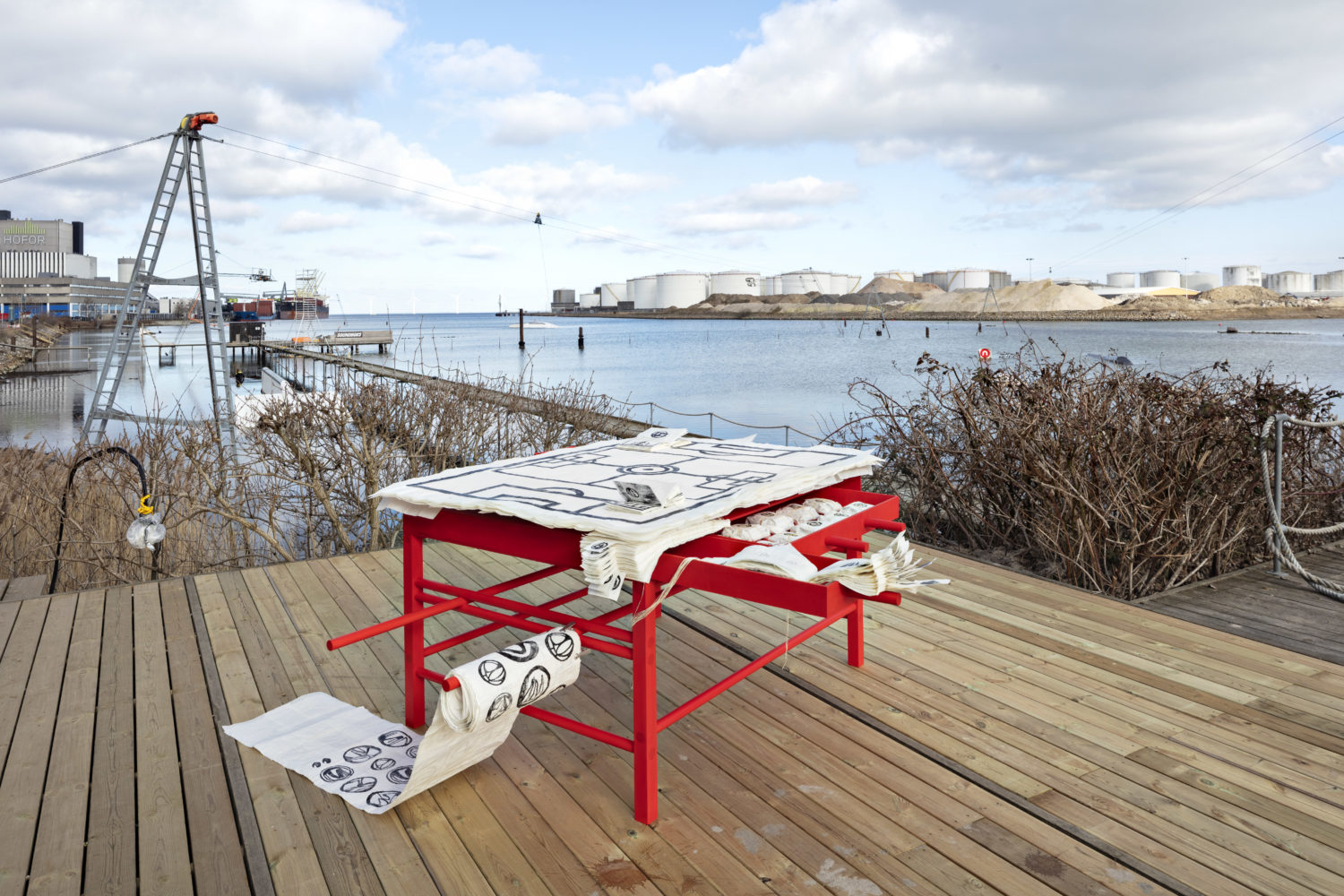This year’s main theme asks what we want to take away from this extraordinary time, and as Else Skjold writes in the main article of the catalogue, the strange deceleration meant, not least, that familiar elements, such as home interiors, technology, clothes and working procedures, became highlighted and noticeable in a new way, as the world shifted. This careful examination of the way we live and of materials – their character, stories and possibilities – is a key focus in this year’s Biennale.

Certain topics stand out with particular clarity. One of the most prominent is terroir, as in Ane Fabricius Christiansen’s basic research experiments with local kaolin from Bornholm. The material has long been rejected as a basis for Danish porcelain production due to a high content of impurities, but here it is revitalized in organic, choral-like forms with an expression that is a far cry pure, white, taut porcelain with all its connotations of bourgeois neatness and domestic splendour. Terroir is also a key aspect of Anne Damgaard’s reflections on how seaweed and textile can be integrated, while Dorte Østergaard Jakobsen’s embroidered topographies – made with inherited thread – evokes landscapes and localities.

It all overlaps the nature theme, an unavoidable topic here as in contemporary art; of course, the pandemic has only increased our general awareness of the torture inflicted on nature by humankind. This theme is manifested as jellyfish-inspired ceramic in Bente Skjøttgaard’s contribution and as simultaneously gentle and ominous animal figures in homemade play dough in Martine Myrup’s. Top & Berg’s delicate earthenware table service Flora Danica Raw fired at a low temperature and dyed directly with wild flowers, is a set that will necessarily be stained by the food that is served on it; and in Helle Rude Trolle’s woven piece, nature is present in the slow process of dyeing the threads indigo blue. All the threads for her metres-high, beautiful woven pieces were contributed by other weavers from around the world. Thus, as an image of a community that transcends time and place, the indigo thread connects with another key theme at this year’s Biennale: the collective aspect.
Helen Clara Hemsley’s expressive jewellery is made using contributions from others and thus charged with stories, while Ane Fabricius Møller’s large collection of lost and found gloves has been used to create imprints in a brand-new hand sign alphabet: a contribution to new pandemic or post-pandemic greeting forms. The winner of this year’s Biennale Award, Helle Vibeke Jensen, has created a complete sign system for her ‘football table’, complete with a new anthem, as an ironic greeting to the great affinity for football and sports in Danish cultural policy.

Another key theme is calm and reflection, a focus that is expressed in a wide variety of materials and formats, including Mette Colberg’s windows, Frederik Gustav’s Balancing Game with wood and pebbles, Marlene Klok Mikkelsen’s digital meditation parody and Liv Marie Rømer’s textile.
Small, hybrid forms dominate this year’s Biennale, probably as a reflection of the simultaneously physical and mental compression during a strange year, and one misses the bigger gestures, more voluminous and forceful expressions, especially in the context of the beautiful but also imposing halls at Koldinghus.

